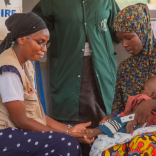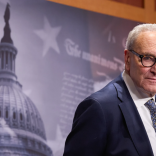‘We called ourselves the lifeboat crew’: how fired USAID workers launched a rescue project ...
G-7 leaders support ‘sizeable’ Special Drawing Rights allocation

Photo: G7 UK, Official account of the 2021 UK Presidency of the G7 on Instagram
Finance ministers from the G-7 group of industrial nations agreed to a new “sizeable” issuance of International Monetary Fund Special Drawing Rights on Friday, sending the clearest signal yet that countries might expect an influx of liquidity to fight the COVID-19 pandemic.
“Today’s milestone agreement among the G7 paves the way for crucial and concerted action to support the world’s low-income countries, ensuring that no country is left behind in the global economic recovery from coronavirus,” said U.K. Chancellor of the Exchequer Rishi Sunak, who chaired Friday’s meeting of G-7 finance ministers, in a statement.
While the G-7 finance ministers described the new issuance as “sizeable,” they stopped short of stating an amount. They did say the new allocation will be “subject to the IMF’s analysis of global reserve needs,” which will be presented before any formal agreement. That assessment is highly anticipated.
“We are waiting on the IMF to formally assess the needs of poor countries to decide on the size of a SDR issuance,” said Eric LeCompte, executive director at Jubilee USA Network, in a statement. “There is no doubt that developing countries have needs north of a trillion dollars.”
📢 READ the Leaders’ Statement issued at the first #G7UK leaders’ meeting today where they agreed to intensify cooperation on fighting COVID-19 and “shape a recovery that promotes the health and prosperity of our people and planet” https://t.co/p2lioRMELj
— G7 UK (@G7) February 19, 2021
Another outcome of the meeting was an agreement between the G-7 and IMF to enhance transparency and accountability around SDR usage and to determine how countries could voluntarily use their SDRs to support low-income countries. The G-7 said IMF should determine some options for how that could be done, but it should not delay an agreement to a new general allocation, the statement said.
SDRs have been widely discussed as one of the most critical liquidity tools for low-income countries in responding to the COVID-19 pandemic. For such countries struggling to fund their health and economic responses, SDRs could act much like stimulus efforts that the wealthiest countries have deployed domestically.
The seeming consensus in the G-20 group of industrial and emerging-market nations is that the new issuance would include about $500 billion worth of SDRs. But development advocates have been calling for a larger issuance — up to $3 trillion.
“We urge the IMF shareholders to approve as much as possible, as quickly as possible,” said Nadia Daar, head of Oxfam International’s Washington office, in a statement. “There is no time to waste. Low-income countries, and even many middle-income ones are in desperate need of funds to fight COVID-19 and the economic devastation it has brought in its wake. A new SDR allocation will provide welcome financial respite from the crisis.
By Adva Saldinger












Leave a Reply
Be the First to Comment!
You must be logged in to post a comment.
You must be logged in to post a comment.